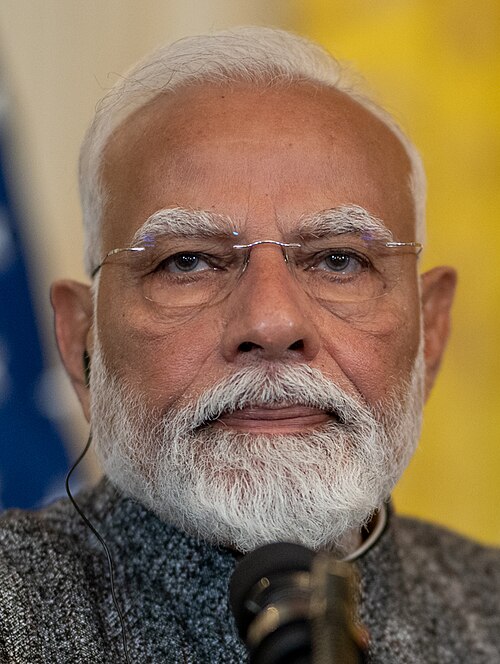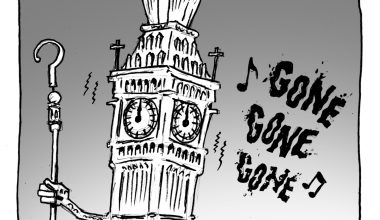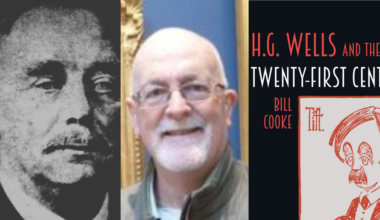On 4 July 1980, a huge crowd gathered in the Pakistani capital of Islamabad. It was a demonstration by minority Shia Muslims against the military dictator General Zia-ul-Haq’s newly promulgated Zakat and Ushr Ordinance, which enforced the Sunni system of Zakat and Ushr—taxes on wealth and agricultural produce—on the Shia community. Since Shias have a completely different system of Zakat and Ushr, they were enraged and declared this a clear case of sectarian discrimination.
Similarly, in December 2019, protests burst out across India, led by minority Muslims against the Citizenship Amendment Act (CAA), which had recently been enacted by the Hindu nationalist BJP government led by Narendra Modi. The CAA amended the Citizenship Act of 1955 to provide an accelerated pathway to citizenship for refugees from Islamic countries who are persecuted for belonging to a minority religion. The Act conspicuously failed to include Muslims. Critics, including Indian Muslims, considered this a clear act of Hindu nationalist sectarianism, arguing that it was the first time religion had been used as a basis for Indian citizenship. Protests spread across India to challenge Modi’s government.
In both these instances, a religious minority protested after being discriminated against by a powerful ruler who used religion as a cornerstone of his governance. There are, of course, many differences between the rise of religious authoritarianism in India and Pakistan, but there are important, and worrying, similarities also.
General Zia-ul-Haq ruled Pakistan for eleven years until his death in 1988 and left indelible marks on the social and political fabric of Pakistan. Narendra Modi, now in power for exactly eleven years, has been almost unchallenged and has sought to change India in a similar way, enforcing a majority religious identity on the nation.
Modi is an elected leader, unlike Zia, who took over after a military coup and was never elected by popular vote. One way to interpret this is that Modi reflects the sentiments of India’s Hindu majority, who, according to the Hindu nationalist narrative, were historically suppressed by hundreds of years of Muslim rule. Now they want revenge against the ‘invaders’ and their supporters. On the other hand, Zia was never approved by the Pakistani majority, yet his legacy—the Islamisation of Pakistan—remains potent.
This leads to another interesting contrast between the two leaders. While Zia was almost unknown before becoming Army Chief in 1976, Modi was a well-known and rather notorious figure, especially due to his alleged complicity, or at least silence, in the face of anti-Muslim violence during the Gujarat riots of 2002. This led to Modi facing a travel ban by the US and several other Western nations. It can be said that Modi was a political leader in the making, harnessing Hindu nationalist sentiment to become Prime Minister in 2014.
Just like Zia, Modi mixes religion and politics, with dangerous consequences. Zia’s rule as an Islamic military dictator had a significant impact on all aspects of life in Pakistan. He ruled during the Cold War, at the time of the Iranian Revolution, which led to the creation of a Shia theocracy, and the Soviet invasion of Pakistan’s northern neighbour, Afghanistan. Zia promoted himself as a champion of Sunni Islam and supported the Afghan Mujahideen against the ‘infidel Soviets’. This policy emboldened and strengthened extremist groups and fomented instability within Pakistan, both issues which still haunt the country today. Zia’s Islamising regime exacerbated tensions between Pakistani Sunnis and Shias, leading to sectarian violence.
Modi has a similarly problematic history when it comes to sectarian violence. He was Chief Minister of Gujarat during the 2002 riots, in which more than 1,000 people, mostly Muslims, were killed, and he is still seen by many as complicit in the anti-Muslim violence. After becoming Prime Minister, he has tacitly supported cow vigilantes—mobs who kill people, mostly Muslims, based on accusations of cow slaughter—across India. According to a Human Rights Watch report, cow-related killings have risen sharply since Modi came to power. Not only that, but the Modi government has on various occasions tried to amend the Constitution in ways that disadvantage or disenfranchise religious minorities. The Waqf (Amendment) Act, on which more below, is the latest example of this.
General Zia made several changes to the Constitution of Pakistan. Perhaps the most important was the Eighth Amendment, which greatly expanded the powers of the president, including giving him the power to dissolve elected governments, which paved the way for future martial law.
In 1979, Zia promulgated the notorious Hudood Ordinances, which embedded Islamic law into Pakistan’s legal system. The most controversial components were the laws pertaining to sexual offences, specifically the Zina Ordinance, which created new criminal offences of adultery and fornication and allowed for new, extreme punishments for these, such as whipping and stoning to death. Though slightly revised in 2006, the Zina Ordinance is still in force.
Zia also created a parallel legal system. The purpose of the Federal Shariat Court, established in 1980, is to judge laws passed by parliament according to Islamic doctrine. These changes and many others left the Pakistani constitutional framework completely compromised, beholden to the military and the mullahs.
Blasphemy law was also changed for the worse under Zia. Before Zia, blasphemy laws existed but were rarely used. General Zia’s regime consolidated these laws and amended them to make them stricter. The death penalty was added for those accused of committing blasphemy against the Prophet Muhammad. Ahmadis, Pakistan’s most persecuted minority, were explicitly targeted; their claim to be Muslims was denied by the state.
Meanwhile, Modi’s BJP government has also made several changes to the Indian constitutional framework. The unilateral revocation of Article 370 by the BJP government in 2019 not only ended the special status of Jammu and Kashmir but also led to the bifurcation of Jammu and Kashmir into two separate union territories (territories ruled directly by the central government). This move bypassed normal parliamentary procedure, with the Jammu and Kashmir Legislative Assembly being dissolved.
The CAA, as discussed earlier, introduced a religious test for citizenship. By excluding Muslims, the act violates Article 14 of the Indian Constitution, which guarantees equality before the law. And the Waqf (Amendment) Act, effective from 8 April 2025, empowers the central government to oversee Islamic charitable endowments (Waqf), which constitute India’s third-largest landholding category. This law enables state encroachment on minority assets under the guise of combating corruption and promoting gender and religious inclusivity on the boards.
Zia also altered the education system to promote his ideology. For Zia, the survival of Pakistan depended on embedding Islam in every facet of life. He made Islamic studies mandatory for all pupils and amended the curriculum to add more content emphasising the arrival of Islam in South Asia, while content discussing non-Muslim history, such as the Indus Valley Civilisation, was minimised. This change had a huge impact on generations of Pakistanis, and its impact can still be felt today, with most Pakistanis knowing very little about the pre-Islamic history of their region.
The Modi government, meanwhile, in a bid to ‘Indianise’ education, has introduced Hindu nationalist ideology into the curriculum. Especially after introducing the National Education Policy of 2020, the BJP has aimed to integrate subjects like Vedic Mathematics, Yoga, and Sanskrit into education. 12,000 schools affiliated with the education wing of the BJP-allied paramilitary organisation Rashtriya Swayamsevak Sangh present Vedic cosmology as a historical fact. These schools teach that advanced scientific knowledge is to be found in ancient Hindu scriptures. For example, they claim that the depiction of Pushpaka Vimana (flying chariots or palaces in Hindu mythology) is evidence of prehistoric aviation technology. And references to the Muslim Mughal rulers of India have been removed from textbooks in an attempt to minimise the long, rich history of Islam in India.
One could go on at length comparing the policies and actions of General Zia and Narendra Modi. Perhaps the most important thing to understand is the fact that though General Zia lived and died decades ago, the marks he left on Pakistan are still clearly visible. Terrorism, religious extremism, and blasphemy-related violence—in short, oppression and suffering—are at an all-time high.
The impact of General Zia’s Islamisation policy is a clear warning to India. If you bring into power an authoritarian ruler who uses religion for political gain, not only you but future generations will pay. Programmes of Hinduisation as well as Islamisation have no place in a free, secular, democratic society. India must reject this path, and Pakistan must turn away from it.
Related reading
The rise and fall of god(s) in Indian politics: Modi’s setback, Indic philosophy, and the freethought paradox, by Kunwar Khuldune Shahid
A True Reflection of Pakistan: Review of ‘Paying the Price’, by Muneeb Qadir, by Sonia Nigar
Sambhal: the story of a controversial town and the challenges of human rights and religious minorities, by Zubair Janwary
Trampled Rights: The Tragic Stories Behind Blasphemy-Related Killings in Pakistan, by Shaukat Korai
Image of the week: Ajita Kesakambali, ancient Indian materialist and one of the Six Heretics, by Daniel James Sharp
The evils of feudalism in Pakistan: a personal and political narrative, by Malik Ramzan Isra
Campaign ‘to unite India and save its secular soul’, by Puja Bhattacharjee
The Galileo of Pakistan? Interview with Professor Sher Ali, by Ehtesham Hassan
‘Words are the only victors’ – Salman Rushdie’s ‘Victory City’, reviewed, by Daniel James Sharp
How the persecution of Ahmadis undermines democracy in Pakistan, by Ayaz Brohi
The resurgence of enlightenment in southern India: interview with Bhavan Rajagopalan, by Emma Park
From the streets to social change: examining the evolution of Pakistan’s Aurat March, by Tehreem Azeem
Faith Watch, February 2024, by Daniel James Sharp
Surviving Ramadan: An ex-Muslim’s journey in Pakistan’s religious landscape, by Azad
Faith Watch, March 2024, by Daniel James Sharp
Breaking the silence: Pakistani ex-Muslims find a voice on social media, by Tehreem Azeem
Religion and the decline of freethought in South Asia, by Kunwar Khuldune Shahid
Coerced faith: the battle against forced conversions in Pakistan’s Dalit community, by Shaukat Korai
Saving Bradlaugh Hall, by Andrew Whitehead









Your email address will not be published. Comments are subject to our Community Guidelines. Required fields are marked *
Donate